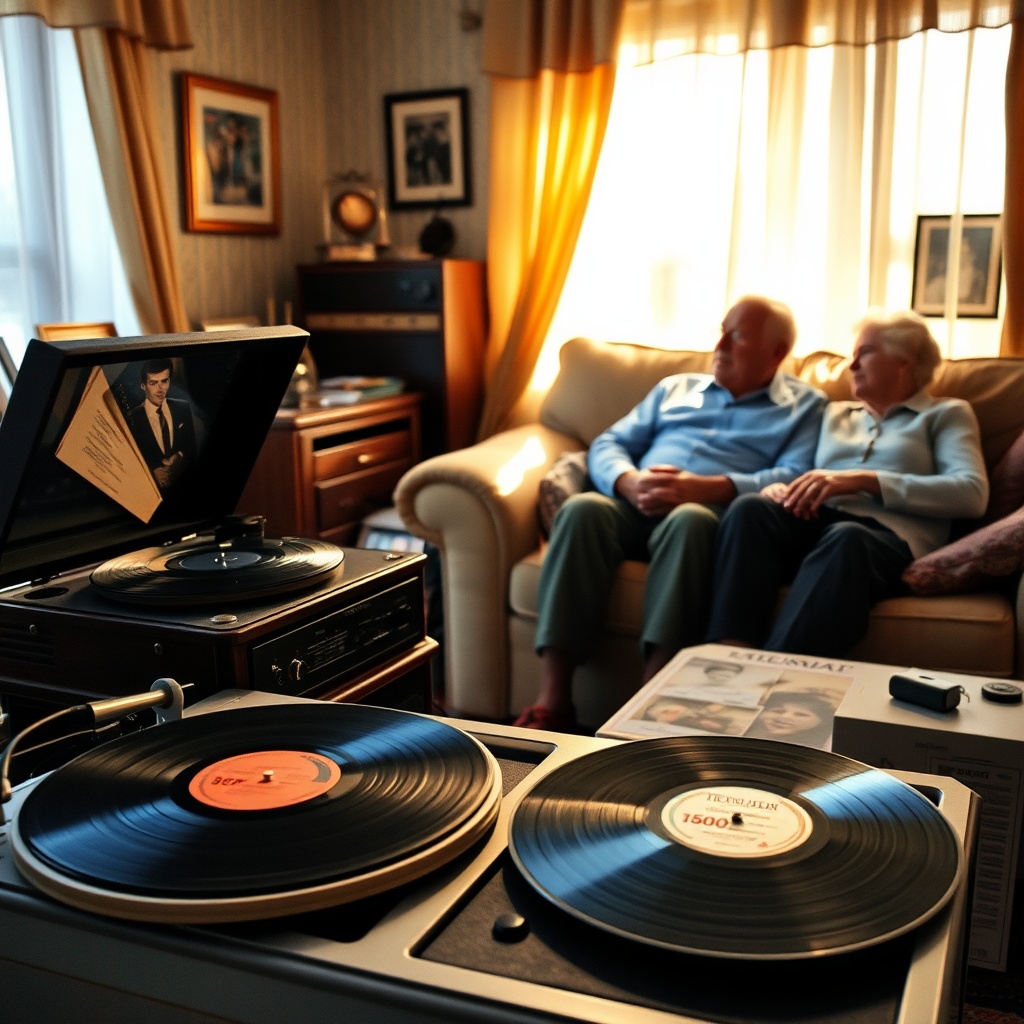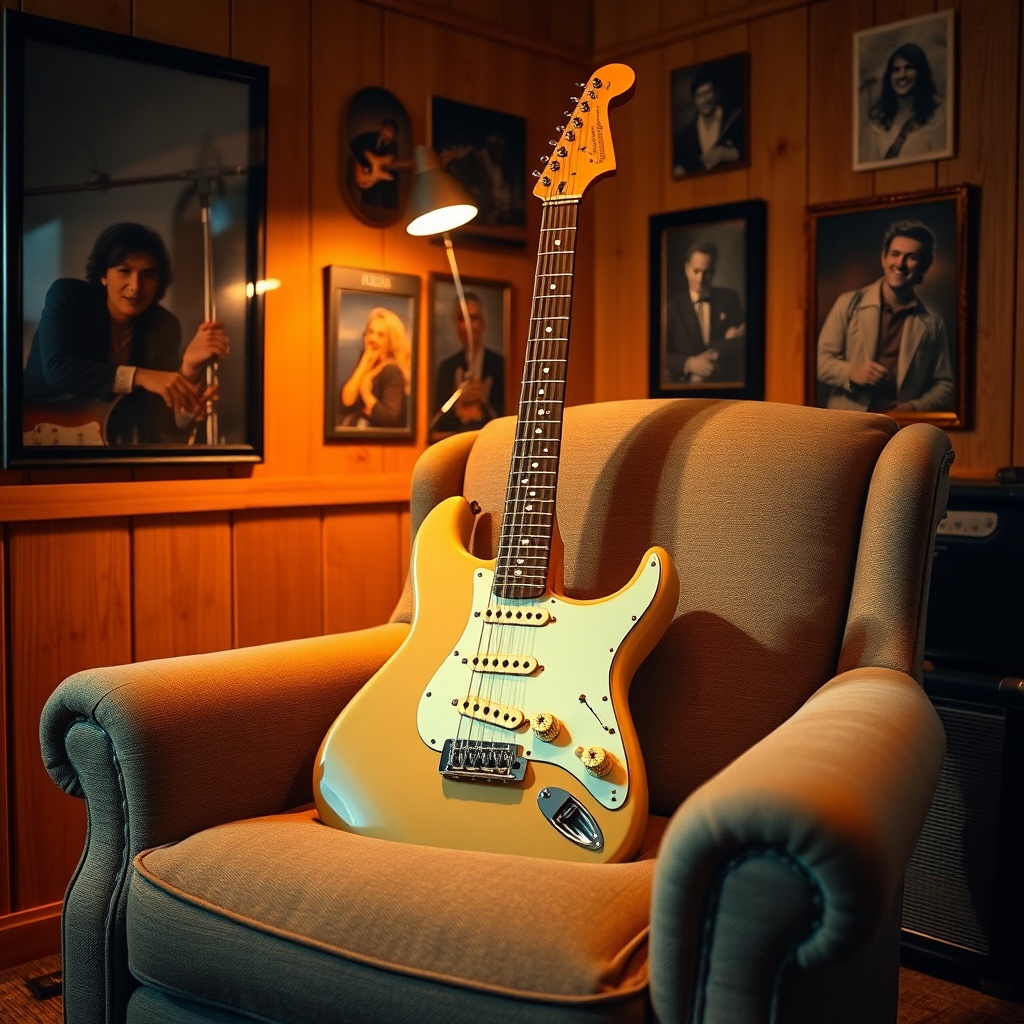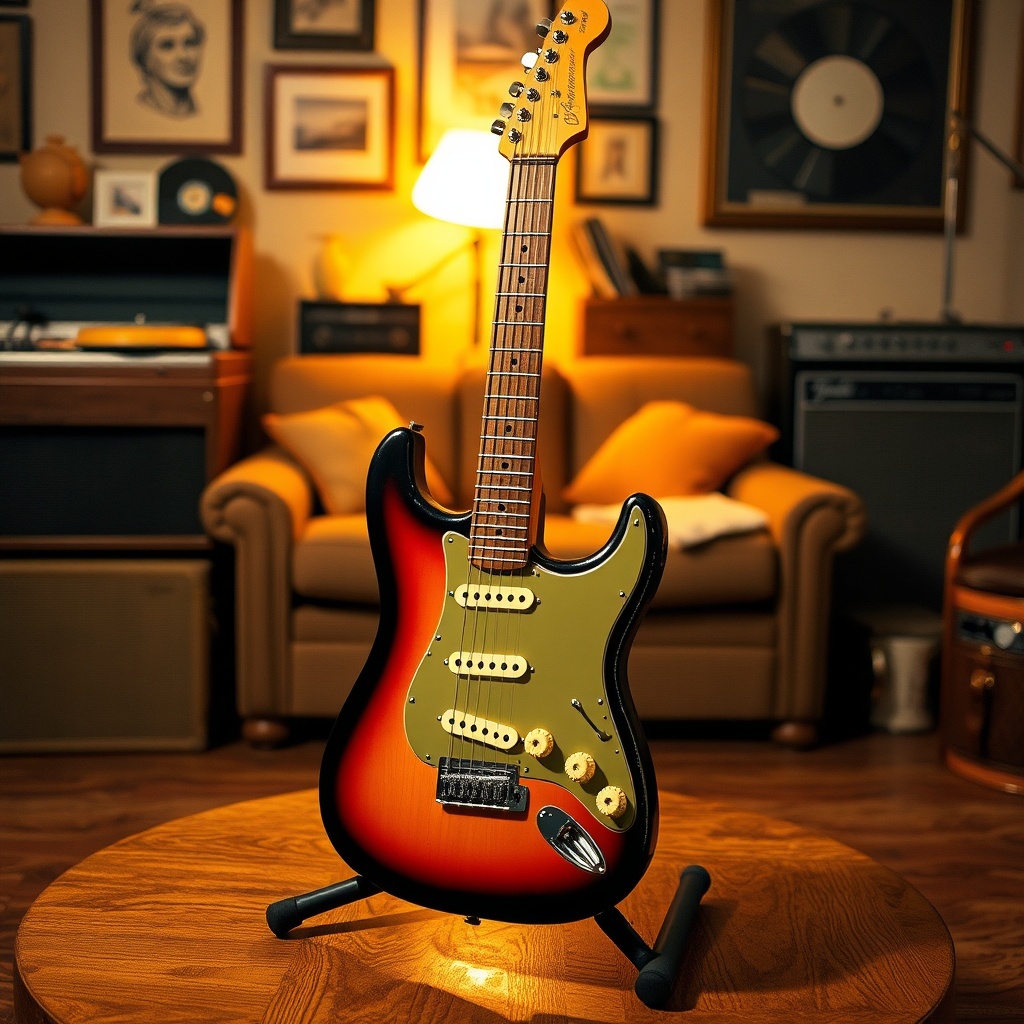Reliving the Golden Era: The Cultural Impact of the 1960s Stratocaster

Introduction to the 1960s Stratocaster
The 1960s was a pivotal decade, not only for music but for culture as a whole. The Fender Stratocaster became more than just an instrument; it transformed into a symbol of the era’s vibrant spirit. Its sleek design and versatile sound captivated musicians and audiences alike, forever changing the landscape of rock and roll.
The Stratocaster: A Catalyst for Musical Innovation
Imagine the iconic artists who wielded this guitar. Each strum and riff contributed to a cultural revolution. Can you recall the first time you heard Jimi Hendrix’s electrifying rendition of “The Star-Spangled Banner”? The Stratocaster was pivotal in shaping his sound, allowing him to innovate and push the boundaries of music.
Key Features That Defined the Stratocaster
- Body Shape: The contoured body made it comfortable to play, enabling artists to perform for hours.
- Sound Versatility: With its three single-coil pickups, the Stratocaster offered a range of tones suitable for blues, rock, and beyond.
- Color Variations: From classic sunburst to custom finishes, the visual appeal matched its musical capabilities.
Cultural Icons and Their Influence
The 1960s Stratocaster was embraced by a myriad of artists, each adding their unique flair. Here are a few legendary figures:
| Artist | Signature Song | Impact on Culture |
|---|---|---|
| Jimi Hendrix | “Purple Haze” | Revolutionized guitar playing with feedback and distortion. |
| Eric Clapton | “Layla” | Defined the blues-rock genre, showcasing emotional depth. |
| David Gilmour | “Comfortably Numb” | Elevated the use of guitar solos in progressive rock. |
The Stratocaster in Popular Culture
As the Stratocaster gained popularity, it transcended music, influencing fashion, art, and social movements. Can you remember the vibrant colors and bold patterns of the 60s? The guitar’s aesthetic harmonized perfectly with the era’s psychedelic visuals. It became a staple in music festivals, embodying the spirit of peace and love.
Interactive Reflection
Take a moment to reflect on your experiences with the 1960s Stratocaster. Did you have a favorite band or song that featured this iconic guitar? Perhaps you attended a concert where it was played? Share your memories with friends or family; the stories you tell can help keep the legacy alive.
Conclusion: The Lasting Legacy of the 1960s Stratocaster
The Fender Stratocaster of the 1960s is more than just an instrument; it’s a cultural artifact that continues to inspire musicians and fans around the world. Its timeless elegance and innovative design allowed it to shape the sound of an era, leaving an indelible mark on the pages of music history.
Strings of History: The Iconic Sound that Defined a Generation

Welcome to a nostalgic exploration of the 1960s Stratocaster, a guitar that has not only shaped the sound of a generation but has also woven itself into the fabric of music history. Let’s take a moment to revisit the remarkable journey this instrument has taken and the impact it has made on artists and audiences alike.
The Birth of an Icon
The Fender Stratocaster was introduced in 1954, but it was during the 1960s that it truly blossomed into a symbol of musical innovation. Its sleek design and versatile sound made it a favorite among a plethora of musicians.
Musical Versatility
What makes the Stratocaster so special? Here are a few features that contributed to its iconic sound:
- Single-Coil Pickups: These pickups produce a bright, cutting tone that is perfect for both clean sounds and overdriven effects.
- Contoured Body: The ergonomic design allows for comfortable playability, making it ideal for long performances.
- Whammy Bar: This feature allows guitarists to bend notes and create expressive sounds.
Defining Moments in Music
From Jimi Hendrix at Woodstock to Eric Clapton in Cream, the Stratocaster has been at the forefront of many groundbreaking musical moments:
| Artist | Performance | Year |
|---|---|---|
| Jimi Hendrix | Star-Spangled Banner | 1969 |
| Eric Clapton | Crossroads | 1968 |
| David Gilmour | Comfortably Numb | 1979 |
The Cultural Impact
Beyond music, the Stratocaster has influenced fashion and culture. Its striking appearance and association with legendary musicians have made it a coveted item for collectors and enthusiasts alike.
Interactive Exploration
Let’s take a moment to reflect. Which song played on a Stratocaster resonates with you the most? Was it the electrifying riffs of Hendrix or the soulful melodies of Clapton? Share your thoughts and memories!
The 1960s Stratocaster remains a timeless icon, embodying the spirit of an era. As we celebrate its contribution to music history, we invite you to explore its legacy and perhaps even pick up a guitar to create your own melodies.
From Stage to Home: How the Stratocaster Became a Timeless Treasure

Introduction to the Stratocaster
The Fender Stratocaster, with its iconic shape and rich history, has earned its place as a cherished instrument in the hearts of musicians and enthusiasts alike. Designed in the early 1950s, its evolution throughout the 1960s marked a significant era in music. Can you recall the first time you heard that unmistakable Strat sound?
A Stage Sensation
In the 1960s, the Stratocaster became synonymous with the rock and roll revolution. Legends like Jimi Hendrix and Eric Clapton took to the stage, wielding this beautiful instrument to create sounds that would resonate through generations. As you think back to those thrilling performances, what memories come to mind? Perhaps a concert you attended where the Stratocaster stole the show?
Sound that Captivates
The sound of the Stratocaster is truly unique, characterized by its bright, bell-like tones. Its three single-coil pickups allow musicians to explore a wide range of sonic possibilities. Have you ever played a Strat yourself? What did you think of its distinctive sound?
From Concerts to Living Rooms
As the Stratocaster soared to fame on stage, it also found a place in homes across the world. Musicians began to embrace its versatility, strumming away in their living rooms, creating music that echoed the sentiments of the era. Do you remember playing or listening to music in your home during the 1960s? How did the Stratocaster influence the way you experienced music?
The Construction and Design
The Stratocaster’s sleek design and comfortable body shape made it a favorite among players. Made with quality materials, it was not just an instrument but a work of art. The sunburst finish and elegant contours are still admired today. What design features of the Stratocaster do you find the most appealing?
Legacy and Timelessness
Decades later, the Stratocaster still holds its ground as a timeless treasure. From garage bands to professional studios, it continues to inspire musicians of all ages. As we celebrate its legacy, let’s consider: what does the Stratocaster mean to you? How has it influenced your love for music over the years?
Whether on stage or in the comfort of home, the Fender Stratocaster has woven itself into the fabric of music history. Its ability to adapt and inspire makes it a true testament to creativity and style. Share your thoughts and memories about the Stratocaster—how has it shaped your musical journey?
Craftsmanship and Innovation: The Legacy of the 1960s Stratocaster Design
Imagine holding an instrument that not only shaped the sound of music but also embodied a cultural revolution. The 1960s Fender Stratocaster does just that. Its design combines meticulous craftsmanship with groundbreaking innovation, making it a coveted piece for musicians and collectors alike.
1. The Art of Craftsmanship
Each 1960s Stratocaster was crafted with precision. The body, typically made from alder, provided a light yet resonant tone. The finish options were as varied as the music it inspired, from vibrant sunburst to classic solid colors.
| Feature | Description |
|---|---|
| Body Material | Alder for resonance and weight |
| Neck Construction | Maple or rosewood, offering different tonal qualities |
| Pickups | Single-coil for a bright, clear sound |
| Fretboard | 21 or 22 frets for playability |
2. Innovative Design Elements
The 1960s Stratocaster introduced several design elements that have become iconic:
Contoured Body: The contoured edges allowed for comfort while playing, making it a favorite among performers.
Tremolo System: The innovative tremolo arm provided new sonic possibilities, allowing musicians to create vibrato effects.
Three-Pickup Configuration: This design offered a wider range of tones, making it versatile for various music genres.
3. The Sonic Legacy
Musicians such as Jimi Hendrix, Eric Clapton, and Stevie Ray Vaughan defined the sound of the era with the Stratocaster. Their styles showcased the guitar’s ability to adapt to rock, blues, and beyond. The unique sound of a 1960s Stratocaster is characterized by its crisp highs and warm lows, making it a staple in any musician’s arsenal.
4. Collectibility and Value
Today, the 1960s Stratocaster is not just an instrument; it is a valuable collectible. Vintage models can fetch impressive prices at auctions, making them a wise investment for enthusiasts. The craftsmanship and innovation of these guitars have solidified their place in music history.
In conclusion, the 1960s Stratocaster stands as a testament to the fusion of craftsmanship and innovation. Its legacy continues to inspire guitarists around the world, reminding us of the timeless elegance that defined an era.
Melodies of Memory: Personal Stories from Stratocaster Enthusiasts
As we delve into the rich legacy of the 1960s Stratocaster, we invite you to share in the heartfelt stories and cherished memories of those who have been touched by this iconic instrument. Each note played resonates with personal history and nostalgia, weaving a tapestry of sound that defines an era.
Stories from the Heart
Imagine sitting in a cozy living room, the soft glow of a lamp illuminating the faces of friends reminiscing about their youth. The Stratocaster, with its sleek curves and vibrant tones, becomes a centerpiece for these conversations. Here are some stories that exemplify the emotional connection many have with this legendary guitar:
| Name | Memory |
|---|---|
| John Smith | “I remember playing at my high school dance. The moment I strummed that first chord, I felt alive. The Stratocaster was my ticket to a world of dreams.” |
| Linda Johnson | “My father taught me to play on his vintage Strat. Every time I pick it up, I can hear his voice guiding me through the songs we loved.” |
| Michael Brown | “I took my Strat to college, where it helped me forge friendships that lasted a lifetime. Those late-night jam sessions are forever imprinted in my memory.” |
| Sarah Davis | “The first time I saw Jimi Hendrix play, I was mesmerized. I saved up for my own Strat, and every time I play it, I feel like I’m channeling that energy.” |
Why the Stratocaster?
The Stratocaster is more than just a guitar; it’s a symbol of creativity and expression. Its versatility has allowed countless musicians to explore different genres, from rock and blues to jazz and beyond. This instrument has a unique ability to evoke emotions, making it an essential part of many lives.
Join the Conversation
We encourage you to share your own stories and experiences with the Stratocaster. What does this guitar mean to you? How has it shaped your musical journey? Connect with fellow enthusiasts and let the melodies of memory resonate through your words.
The 1960s Stratocaster represents a golden era of music that continues to inspire generations. Through personal stories, we celebrate its timeless elegance and the profound impact it has had on our lives. Let’s keep the spirit of the Stratocaster alive as we share our melodies of memory.
